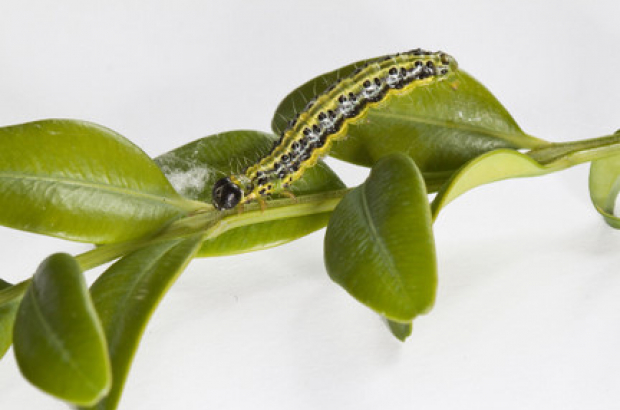- Daily & Weekly newsletters
- Buy & download The Bulletin
- Comment on our articles
Hungry Asian caterpillars gobbling up Brussels’ box hedges
If your normally robust box hedge is looking rather sparse, it’s probably the fault of Cydalima perspectalis, otherwise known as the box tree caterpillar. The invasive pests - the larvae of the box tree moth - are green with a central black stripe, black spots and a black head.
Native to Asia, the species was accidentally introduced into Europe over ten years ago. The arrival of spring means that once again it is ravaging parks and gardens in Brussels in particular, while also spreading out of the city.
Gardeners beware, it likes nothing better than to snack on the famously hardy Buxus sempervirens, which is toxic to other animals, including humans. Box hedges are the favoured shrub of topiary artists. An attack by this seasonal caterpillar can reduce them to a withered skeleton.
How to get rid of the pest
Telltale signs of an invasion are the sticky webs it leaves in branches as well as little green trails of excrement at the foot of the shrub. In the case of a severe attack, gardeners are advised to either meticulously remove each caterpillar by hand or dig up the hedge and dispose of it in bags rather than composting. They can also be controlled with pesticides by professionals.
Extreme action is required because the prolific caterpillars can breed two to three generations every season between May to September, while voracious adult moths can spread five to 10km a year. It is difficult to spot the pest in the early stages of an infestation. The adult moth lays its eggs in the inner branches of the plant and the resulting caterpillars eat their way outwards, rapidly wrapping the plant in cobwebs.



















